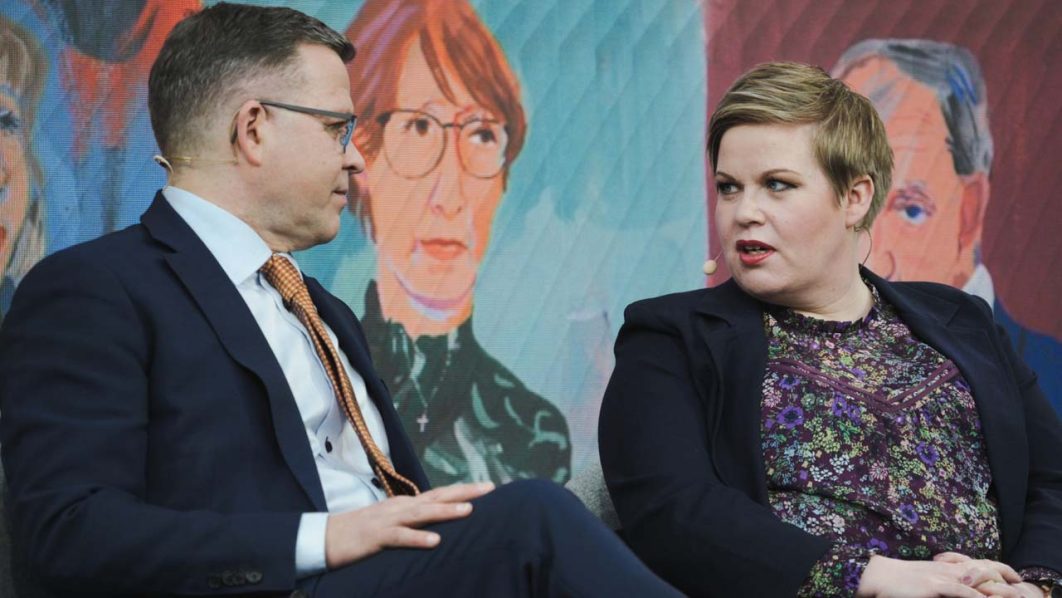
Finland votes Sunday in a nail-biting election with Prime Minister Sanna Marin’s centre-left government fighting to hold on to power. Here are five things to know about the Nordic nation.
– Women in power –
Seven of the country’s eight largest parties are run by women, and Finland ranks among the world’s best countries for gender equality.
When Marin came to power in 2019 — Finland’s third female prime minister — pictures of her five-party coalition, all headed by women, made headlines around the world.
The Finnish parliament was the first in the world to have women as MPs in 1907 when Finland was still an autonomous Grand Duchy of the Russian empire.
While women have never been a majority in parliament, they make up 47 percent of outgoing MPs.
And the share of women running for office on Sunday is the highest ever.
The Finnish language may help explain Finns’ egalitarian nature. It does not distinguish between genders for personal pronouns, with the word “han” meaning both “he” and “she”.
– Historic NATO U-turn –
In a major turnaround, Finland dropped its decades-long policy of military non-alignment in May 2022 and applied to join NATO after Moscow’s invasion of Ukraine.
The country, which shares a 1,300-kilometre (800-mile) border with Russia, is due to soon become a member.
Many Finns long believed that not criticising their giant neighbour’s foreign policy was the best way to safeguard their interests, a policy known as “Finlandisation”.
Before Russia’s invasion of Ukraine, Finnish support for NATO membership was only around 20 to 30 percent, but the war sent it soaring to more than 75 percent.
Although voters see national security and defence as important, NATO membership has not become an issue due to broad political consensus.
– World’s happiest country –
For the sixth year running, Finland was named the world’s happiest country this month by a UN-sponsored index.
With thousands of lakes and seemingly endless forests, the country is also known for its extensive welfare system, high trust in authorities and low levels of inequality among its 5.5 million inhabitants.
Finland also has around three million saunas — more than the number of registered cars — a comfort in a country where temperatures fall below freezing for nearly half the year.
Nonetheless, the happiness report raised some eyebrows when Finland first came out on top of the ranking in 2018.
Many Finns describe themselves as taciturn and prone to melancholy, and admit to eyeing public displays of joyfulness with suspicion.
– Turn to the right? –
Just days before the election, opinion polls put Marin’s Social Democrats neck-and-neck with two right-wing parties.
The centre-right National Coalition Party reportedly held a thin lead over the Social Democrats and the populist, anti-immigration Finns Party.
One of Marin’s coalition partners, the Centre Party, has signalled it is not keen to continue under her leadership.
That means she might have to secure a deal with the National Coalition to obtain a majority — a fairly common situation in Finland’s consensus-oriented politics.
The National Coalition also has the option of forming a right-wing government with the Finns Party, similar to the one the two formed with the Centre Party in 2015.
During that period in government, the Finns Party split.
Its moderate breakaway wing ultimately faded away, while the original Finns Party became the second-biggest party in the 2019 election.
– Immigration and debt –
But the National Coalition is opposed to the Finns Party’s push for a hard line on immigration, which could push them towards Marin’s Social Democrats.
The Finns Party blames a large influx of immigrants for a surge in gang violence in neighbouring Sweden.
The National Coalition meanwhile sees immigration as vital to solving Finland’s ageing population dilemma.
Marin has insisted she would refuse to form a government with the Finns Party, qualifying it as “openly racist”.
But a blue-red government could be hampered by opposing economic policies.
The National Coalition has attacked Marin’s government for what it sees as irresponsible spending.
When Marin came to power in 2019, Finland’s debt-to-GDP ratio was around 64 percent, but spending owing to the Covid pandemic and the war in Ukraine has pushed it up to 73 percent.
The National Coalition wants to cut spending by six billion euros, which left-wing parties see as a threat to Finland’s generous welfare state.
Follow our socials Whatsapp, Facebook, Instagram, Twitter, and Google News.


![Finland to become 31st NATO member on Tuesday 2 [FILE] NATO Secretary-General Jens Stoltenberg poses during a ceremony to mark Sweden’s and Finland’s application for membership in Brussels, on May 18, 2022. (Photo by JOHANNA GERON / POOL / AFP)](https://www.afriupdate.com/wp-content/uploads/2023/04/000_32AC7B9-e1652861180965-120x86.jpg)

![Switzerland signs contract for 36 US fighter jets 4 [FILES] Switzerland](https://www.afriupdate.com/wp-content/uploads/2022/09/switzerland-897x598-1-120x86.jpg)



![Macron to warn China against military backing for Russia 8 [FILES] Emmanuel Macron (Photo by Ludovic MARIN / AFP)](https://www.afriupdate.com/wp-content/uploads/2022/11/000_329M4RQ-scaled-e1655633271945-75x75.jpg)